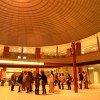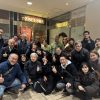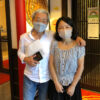Date of Issue: July 11,2022
・Activity 1/City Night Survey : Shibuya, Tokyo(2022.03.10)
City Night Survey : Shibuya, Tokyo
2022.07.11 Hikaru Kimura + Yonglin Ke + Xueying Piao
Shibuya, known as a youth hub, began redevelopment in 2012, transforming into a business district with a cluster of new office buildings and commercial facilities. While many new restaurants have emerged, traditional drinking alleys remain intact. This survey investigates the contrasting night scenes of the new and old Shibuya.

■Overlooking Nightscape of Shibuya
From the Shibuya Scramble Square, the rooftop of Miyashita Park stands out prominently to the east of the central railway tracks. The warm glow along the podium belongs to Shibuya Yokocho (alley). Nestled beside the pitch-black railway tracks and appearing as a dotted red line is Nonbei Yokocho. Viewed from above, Nonbei Yokocho exuded a soft, flickering light, resembling candles, in contrast to the lively and vibrant atmosphere of Shibuya Yokocho.
The overall nightscape, divided by the Yamanote Line tracks, presents a striking contrast: the western side is dominated by tall buildings, densely packed with billboards and advertisements, exuding the lively energy of a traditional entertainment district. The eastern side, on the other hand, has fewer billboards and subdued signage, giving it a unified and calm appearance.
I wonder if Shibuya will eventually become a more standardized urban landscape, much like its eastern side. Personally, I felt the bustling, nostalgic charm of the western side embodies the true spirit of Shibuya, and it’s something worth preserving. (Yonglin Ke)

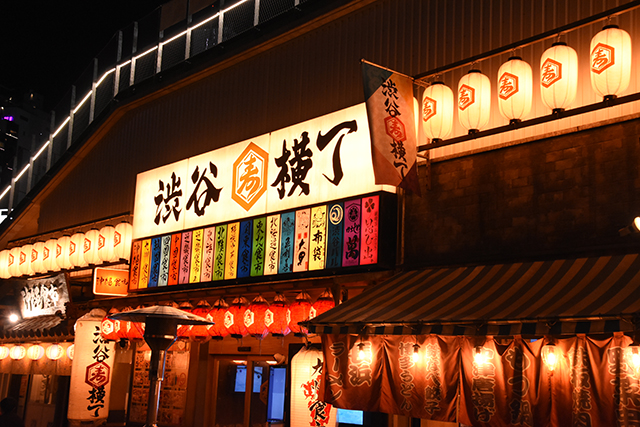
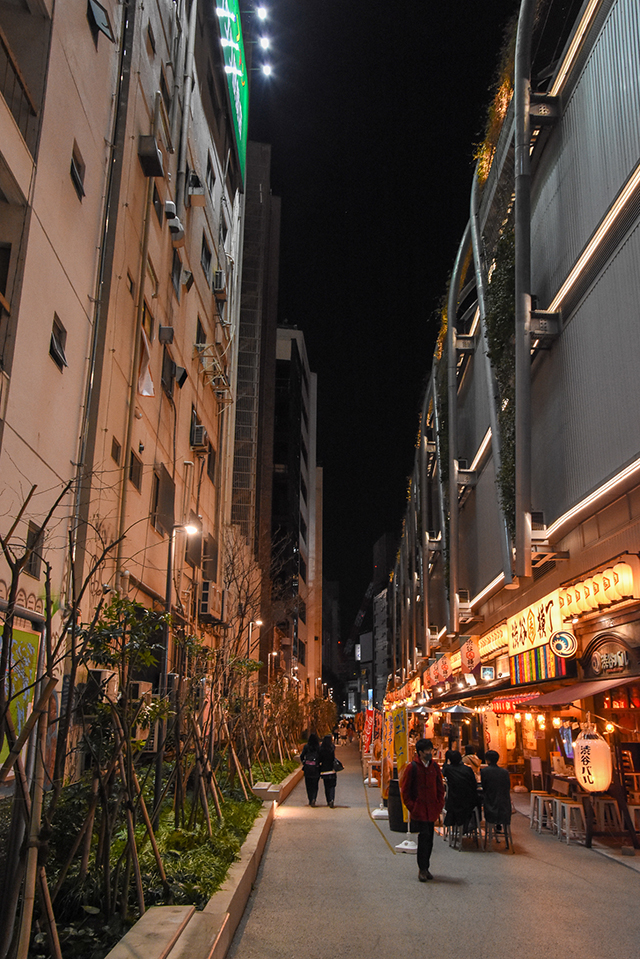
■Shibuya Yokocho
RAYARD MIYASHITA PARK, a new landmark in Shibuya, features Shibuya Yokocho, a 100-meter-long alleyway on the first floor of the south district. This alley is lined with various eateries and its retro design adds to its charm.
The street was illuminated by a mix of 3000K streetlights and 2400-2700K signage lightings, creating a warm and lively atmosphere. While the signages are lit in a unified color temperature, their diverse colors and designs, reflecting each store’s unique characteristics, contributed to a bustling impression. The well-lit Shibuya Yokocho, despite having fewer people than it seemed, gave off a vibrant and lively atmosphere.
The rooftop of the north entrance was equipped with 4100K signage lighting, which spilled over and illuminated the street. It was interesting to see how this accidental effect of the bright white light highlighting the street entrance created an inviting atmosphere. (Xueying Piao)
■Nonbei Yokocho
Nonbei Yokocho has its roots in the post-war black market. Apparently, numerous food stalls once lined the streets near Tokyu Honten-dori and Dogen-zaka. These stalls were later moved due to government regulations, and in 1950, the area was officially established as a restaurant district – Nonbei Yokocho. The small, stall-like size of the shops likely reflects this history. It seemed that the various shop signs, perhaps due to the limited space, were cleverly designed with different shapes and heights to ensure they don’t overlap each other. These signs would normally contribute to Nonbei Yokocho’s distinctive illuminated facade. Sadly, because of the shortened business hours during the pandemic, we couldn’t see them illuminated.
High-pressure sodium streetlights cast an orange hue over the dimly lit street. Although lanterns were hung, the small windows of the shops and the lack of light spilling out made the overall impression somewhat dim, but it was a good atmosphere for drinking. (Yonglin Ke)
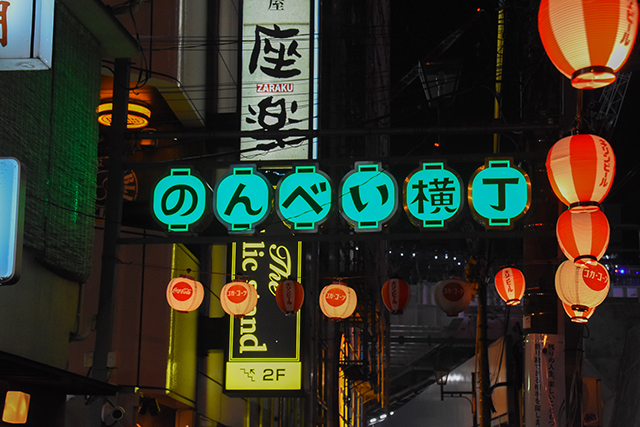
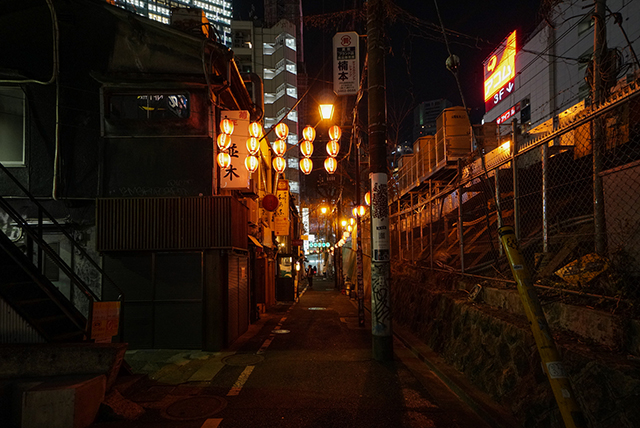

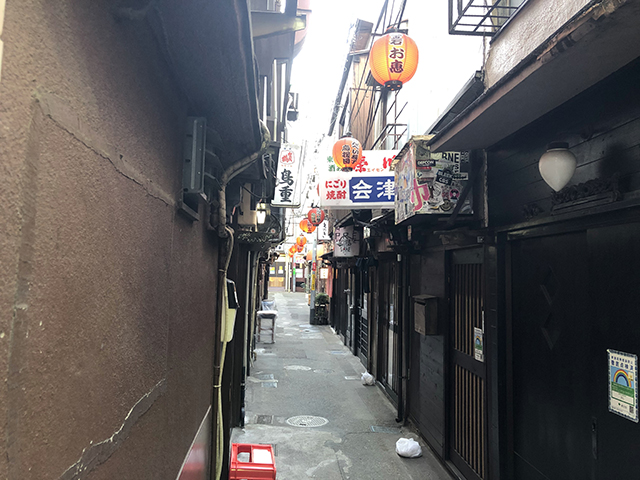
■Summary
The bright lights and lively crowds at Shibuya Yokocho created an atmosphere of joy and vibrancy, In contrast, Nonbei Yokocho looked dark and desolate, perhaps because there were fewer people coming to drink due to the COVID-19 pandemic. While we may be learning to live with COVID-19, I’m sure both areas, with their distinct charms, will eventually regain their bustling atmosphere. We are looking forward to visiting again and enjoying a drink when they do. (Xueying Piao)






